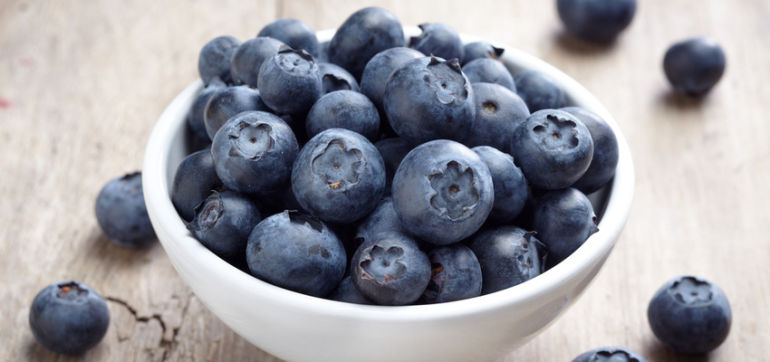Body-For-Life Challenge Summarized
The Body-for-LIFE Challenge is a 12-week healthy living contest based on proven principles in the best-selling book Body-for-LIFE by Bill Phillips, a former competitive bodybuilder. Participants track their progress and submit before and after photos. They are also asked to record their transformation and they are judged on the quality of their outer and inner transformation. Or, you can do the program on your own and incorporate the ideals of this challenge into your every day routine for as long as you reap the health benefits.
This intense exercise and nutrition program is based on the premise that you're more likely to stick with a diet and workout if you see results quickly. It involves weight training alternating with aerobic exercise, and eating 6 small healthy meals a day.
Whether you want fat loss, lean muscle mass, toning, strength, muscle growth, or a lifestyle change, at any stage you can set goals with Body-for-LIFE and achieve them. Inspiring success stories, motivational tips and recipes are just a few of the resources to help you along the way.
The principles:
1)Eat more often. Frequent, balanced meals and healthy snacks help your body burn fat and help maintain stable energy levels. Make it your goal each day to eat six times a day, every few hours.
2)Get moving. Exercise will lead to even better results. Walk with your family, take the stairs instead of the elevator and park farther away from your destination. Body-for-Life uses proven strength-training and cardio programs.
See www.bodyforlife.com for more information.
Nutrition Guidelines For Optimal Performance
Eat six meals a day: this helps you accelerate metabolism and maintain steady energy levels throughout the day.
Combine carbs and proteins at every meal: protein is essential for building healthy muscle, controlling appetite and stabilizing insulin levels, which leads to steady energy throughout the day.
Choose appropriate portion sizes: use common sense - use the palm of your hand or your clenched fist for gauging the portion sizes of solid food. One cup for all lquids.
Plan meals ahead of time: this way you can fix your meals in advance and freeze them.
Shop at least once a week so you have everything you need.
Get containers to store your food: having nutritious meals within reach during a hectic day can keep you on track.
Drink 10 glasses of water every day: you want to stay hydrated when following a comprehensive training, nutrition, and supplementation program.
Don’t eat right before or right after you train: if you can, work out first thing in the morning on an empty stomach for maximum fat burning. Also, waiting an hour to eat after a workout may be an effective strategy for increasing the residual fat-burning effects of exercise over time.
Use high-quality supplements: supplements can help make up for any nutritional deficiencies and enhance performance.
Find your “emotional reason” for staying on track: find your core reason for losing weight and use it to stay committed to your nutrition program.
Strive for consistency, not perfection: you may sway from your diet from time to
time, don’t be hard on your self, recommit to your goal, and get back on track with your next meal.
Foods You Can Eat
Proteins:
Chicken breast
Turkey breast
Lean ground turkey
Swordfish
Orange roughy
Haddock
Salmon
Tuna
Crab
Lobster
Shrimp
Top round steak
Top sirloin steak
Lean ground beef
Buffalo
Lean ham
Egg whites or substitutes
Trout
Low-fat cottage cheese
Wild-game meat
Vegetables:
Broccoli
Asparagus
Lettuce
Carrots
Cauliflower
Green beans
Green peppers
Mushrooms
Spinach
Tomato
Peas
Brussels sprouts
Artichoke
Cabbage
Celery
Zucchini
Cucumber
Onion
Fats:
Avocado
Sunflower seeds
Pumpkin seeds
Cold-water fish
Natural peanut butter
Low-fat cheese
Low-fat salad dressing
Low-sodium nuts
Olives and olive oil
Safflower oil
Canola oil
Sunflower oil
Flax seed oil
Carbohydrates:
Baked potato
Sweet potato
Yams
Squash
Pumpkin
Steamed brown rice
Steamed wild rice
Pasta
Oatmeal
Barley
Beans
Kidney beans
Corn
Strawberries
Melon
Apple
Orange
Fat-free yogurt
Whole-wheat bread
High-fiber cereal
Whole-wheat Tortilla
Whole grains
Vegetarian Proteins:
Tempeh
Seitan
Tofu
Texturized vegetable protein
Soy foods
Veggie burgers
Fats to Avoid:
Butter
Fried foods
Mayonnaise
Sweets
Whole-fat dairy products
Creating A Body-For-Life Meal
Devise a meal plan for each week. Having a plan makes it so much easier for you to eat the right foods every few hours.
Design each meal using the below components.
1.Protein - Choose a portion of lean protein
2.Carbohydrates - Choose a portion of complex carbohydrates
3.Vegetables - Add a portion of vegetables to at least two meals each day
4.Essential fats - Consume one tablespoon of unsaturated oil daily or three portions of salmon per week
5.Water - Drink a glass of water with each meal
Exercise
To obtain results fast, Body-for-LIFE makes exercise a priority along with a healthy eating plan. The program incorporates high-intensity cardio training to burn fat effectively, plus the addition of strength-training to increase your metabolic rate, so you can change the actual shape of your body. Here’s the recommended output schedule:
Daily Training Guide
Day 1
Upper Body Training
Chest/Shoulders/Triceps/Back/Biceps
Day 2
Cardiovascular Workout
Day 3
Lower Body and Abs Training
Quads/Hamstrings/Calves/Abdominals
Day 4
Cardiovascular Workout
Day 5
Upper Body Training
Chest/Shoulders/Triceps/Back/Biceps
Day 6
Cardiovascular Workout
Day 7
Rest
Weight training guidelines:
Weight train intensely, three times per week on alternating days with aerobic exercise three times per week.
Alternate training the major muscles of the upper and lower body.
Perform two exercises for each major muscle group of the upper body.
Select one exercise and conduct five sets with it, starting with a set of 12 reps, then increasing the weight and doing 10 reps, adding more weight and doing 8 reps, adding more weight for 6 reps. Then reduce the weight and do 12 reps. Immediately perform another set of 12 reps for that muscle group using the second selected exercise.
For each muscle group, rest for one minute between the first four sets. Then complete the final two sets with no rest in between, wait two minutes before moving on to your next muscle group, complete this pattern five times for the upper body training experience and four times for the lower body training experience.
Always plan your training before hand.
Record all your weightlifting exercised in a journal indicating the exercise selected and weight lifted.
Cardio guidelines:
Choose cardio activity that works for you. This can be any exercise—jogging, running, biking, swimming, elliptical machine, stairs, even jumping rope—that raises and maintains your heart rate over a predetermined amount of time.
Alternate weight-training and cardio workouts for six consecutive days and rest on the seventh day.
20 mins of cardio breaks down to: 2 mins of warm-up at a slower pace, then 16 mins of gradual speed increase to a high-intensity level, then a slow- down period for 2 mins.
Cardio workouts burn fat, enhance endurance, increase growth hormone secretion, reduce stress levels, improve cholesterol levels, improve digestion, and boost the immune system.
Get that healthy body you’ve always wanted. Enter the Body-for-LIFE challenge or just make it a personal goal, and you will learn to live a healthy lifestyle and effectively manage your weight loss.
You can view the complete article at http://astronutrition.com/blog/book/diets/body_for_life
-
Countdown To A New You
As the New Year quickly approaches, one of the resolutions topping lis
-
Body Mass Index BMI Are You At A Healthy Weight
The body mass index, or BMI, helps clarify an important distinction be
-
10 Steps To Lose Weight Safely
1) Ask Your Doctor About Sensible GoalsYour doctor can help you set
-
Diet Help And The 3 Simple Rules
In this segment we will be covering the 3 simple rules for weight loss
-
Is Juicing Helpful For Weight Loss?
Maintaining a healthy body weight is very important for your overall h
-
Natural ways to Lose Weight
Every year the fitness industry makes millions out of obese people wit
- DON'T MISS
- Buy Weight Loss Diet Pills - Phentramin D
- A primer on how to change habits, be more productive, and improve your health
- Big Problem
- Greatest Abdominal Workouts
- Popular Weight-Loss Tricks That May Backfire
- What’s Your “Non-Diet” Diet Mindset?
- Eat Right and Stay Light
- What You Must Know About Laxatives And Weight Loss
- The Weight Loss Blues – How to Prevent Post-Weight Loss Depression
- Dread Counting Calories? Maybe You Don’t Need to




